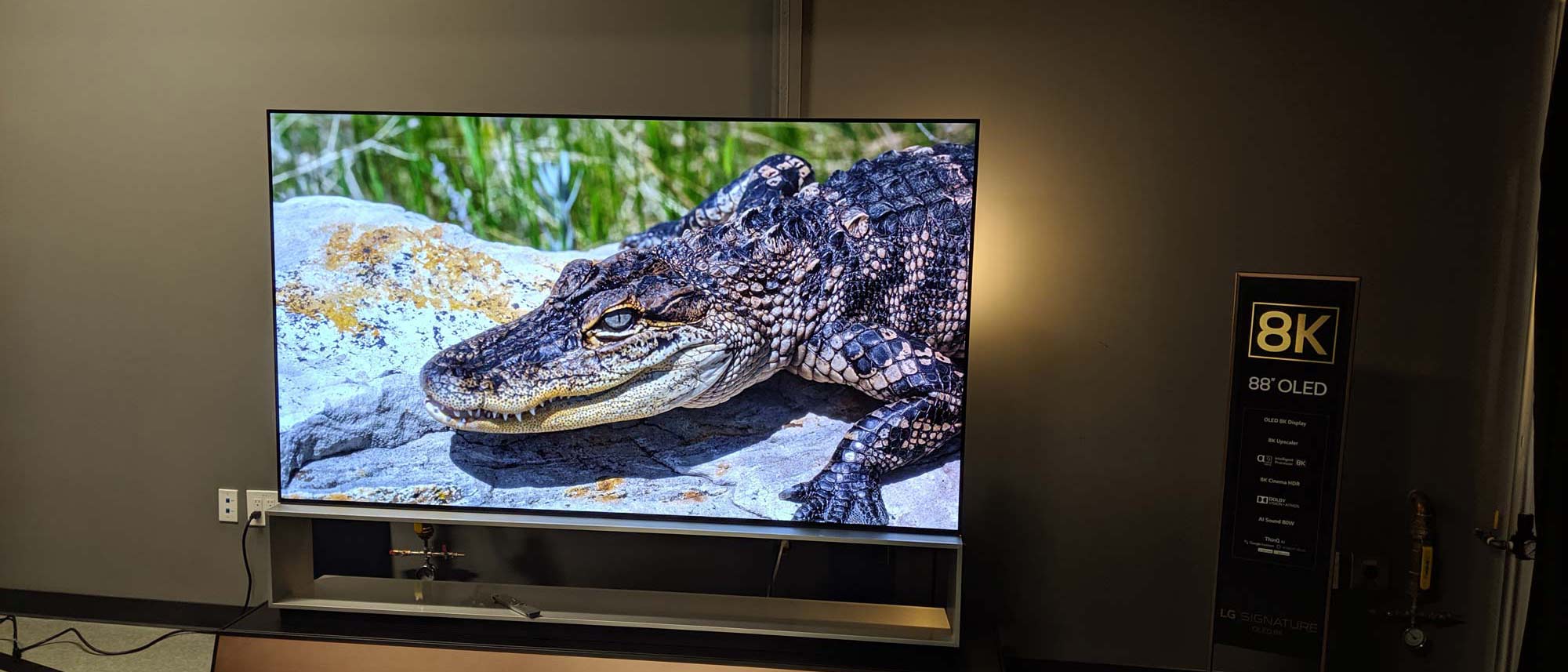Early Verdict
The LG Signature Z9 88-inch 8K OLED TV (OLED88Z9) is one of the best displays on the planet, but this ultrapremium smart TV is so cutting edge that it gets tripped up on basics, like a lack of 8K content and a price tag that's almost as big as the TV.
Pros
- +
Gorgeous OLED display
- +
Jaw-dropping 8K resolution
- +
Best webOS experience ever
Cons
- -
Insanely expensive
- -
No 8K content available
- -
Standards and formats still not set
- -
Some notable display flaws
Why you can trust Tom's Guide
LG's new premium 8K TV sounds almost too good to be true. The LG Z9 88-inch 8K OLED TV is the most advanced model offered by the company, which recently invited a handful of reviewers to its Silicon Valley lab to spend a day testing and evaluating the massive TV.
This enormous display is the largest LG has ever offered consumers, and the set's 8K resolution marks it as an early member of the newest generation of cutting-edge TVs. This comes combined with LG's fantastic design sensibility and excellent smart-TV ecosystem, all wrapped in a premium design befitting a $30,000 product.
Editor's Note: The LG Signature Z9 OLED has since been replaced by the newer LG Signature ZX OLED, which is identical in many respects to the 2019 Z9 model detailed here, but offers a newer video processor. The price is the same, but some specifics of this review may not align perfectly with the newer model.
LG Signature Z9 88-inch 8K OLED TV (OLED88Z9) specs
| Row 0 - Cell 0 | Row 0 - Cell 1 |
| Price | $29,999 |
| Screen size | 88 inches |
| Resolution | 7,680 x 4,320 |
| HDR | Dolby Vision, HDR10, HLG |
| Refresh rate | 120 Hz |
| Ports | 4 HDMI 2.1, 3 USB |
| Audio | 4.2 channels, 80 watts (40-watt woofer) with Dolby Atmos |
| Smart TV software | webOS |
| Size | 77.3 x 57.3 x 11 [stand included] |
| Weight | 229.2 pounds [stand included] |
LG Signature Z9 8K OLED TV price and availability
The Z9 is LG's first retail foray into the 8K space, and it's available in only one size: a giant, 88-inch model. While there may be more size options available in 2020, this is the only option for the 8K OLED being offered now.
The Z9 OLED is an expensive TV by any metric, but the cost isn't as high as initial reports suggested. When pricing details first trickled out earlier this year, the 88-inch behemoth was pegged at $42,000. The actual retail price of $29,999 seems slightly more reasonable by comparison, even if it is well out of reach for most consumers.
The 8K market is new, and as such, tends to be really pricey compared to the $1,000 to $3,000 prices for even most premium 4K sets.
Samsung's 8K QLED sets range from normal sized to a gargantuan 98 inches, with a 55-inch model selling for just $2,999, making it, by far, the most affordable 8K option on the market. But even the 85-inch model, which is closest in size to LG's 88-inch Z9, sells for half the Z9's price, at $14,999.
Sony's Z9G 8K TV is available in a similar, 85-inch size, but it sells for a more modest $12,999. A larger, 98-inch model has also been announced, with a heart-attack-inducing price of $69,999.
About this hands-on review
We got a chance to travel to LG's Santa Clara, California, lab and spend a full day with the Z9 OLED — and even had a chance to test it using the same equipment we use in our regular 4K TV reviews. However, the fact remains that we weren't in our lab and weren't able to compare the set side by side with other premium models. Those comparisons are a key element of our reviews, since that comparison lets us zero in on real features and flaws that separate one TV from another.
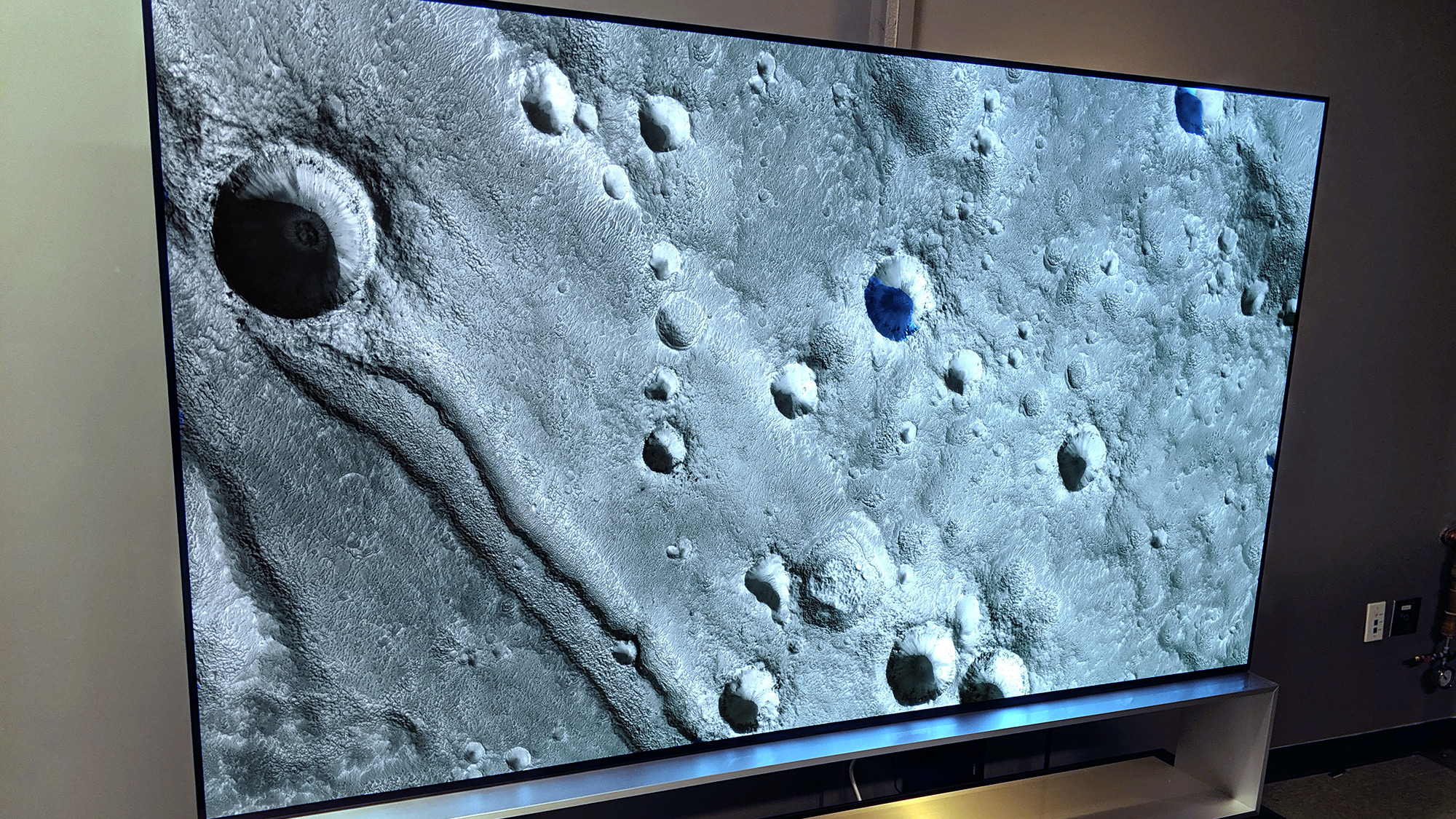
The LG Z9 OLED also happens to be the first 8K set we've been able to put through this testing process. And while it gives us some data points that we can compare across the top 4K sets we've seen, there simply isn't much on the market to compare it against, and nothing that we have any test data on.
So, what we're doing here is more of an in-depth hands-on evaluation. While we are sharing the test data we gathered and making some broad comparisons to other 8K TVs we've seen, and to 4K sets we've reviewed, these aren't based on actual side-by-side comparisons. And the bottom line right now is that the 8K market is so new, and so rarified, that we're just not in a position to render judgement with a score or buying advice.
Last, but definitely not least, the fact remains that 8K content is still extremely scarce. You can't buy 8K movies. You can't get 8K resolution from any mass-market game console or even most high-end gaming PCs. And streaming, which is already the easiest source of 4K content for consumers, has high bandwidth demands and compression issues, problems that will literally quadruple when dealing with 8K resolution.
That's all a long-winded way of saying that 8K display technology is here but that as a consumer product, it's very much in its infancy. We're likely still years out from the point that we would recommend that anyone buy an 8K set.
LG Z9 8K OLED TV design
The LG Signature Z9 OLED is an 88-inch TV. Stop for a moment and consider just how large that is. With the included stand, the set measures 77.3 x 57.3 x 11 inches. It's not the biggest TV I've ever seen, but it's on a very short list of TVs that range between 80 and 100 inches.
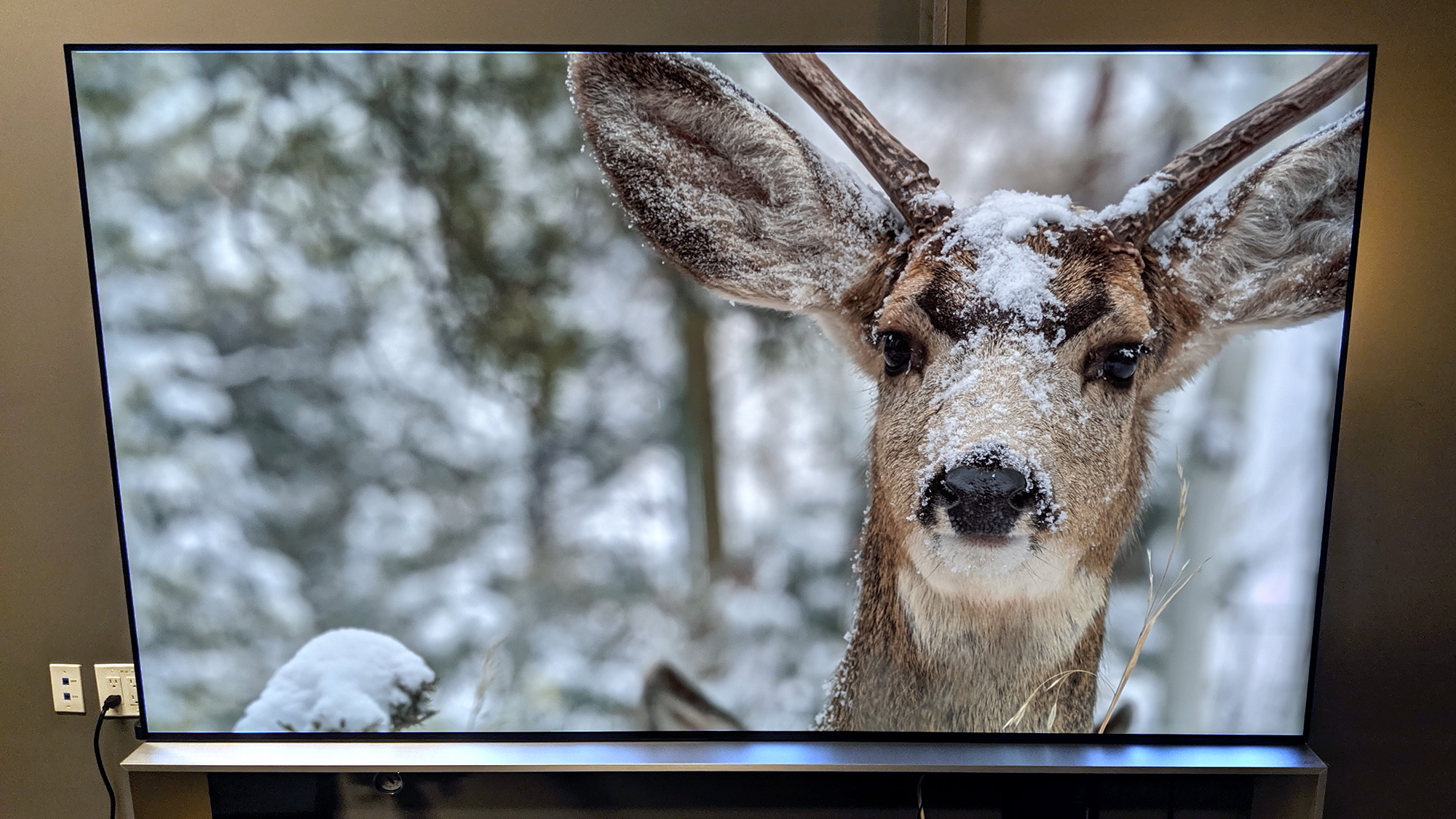
At this size, the TV will be a dominant fixture in the room, and most homes simply won't have the space for a TV of this size.
Weighing in at 229 pounds, the giant panel is way more than one person can set up, and even with a second person, it'll be an intimidating task. The base alone weighs more than 100 pounds, and the OLED display stretches more than 6 feet across. If there's ever a time to enlist professional installers, it's here, when a $30,000 TV is at stake.
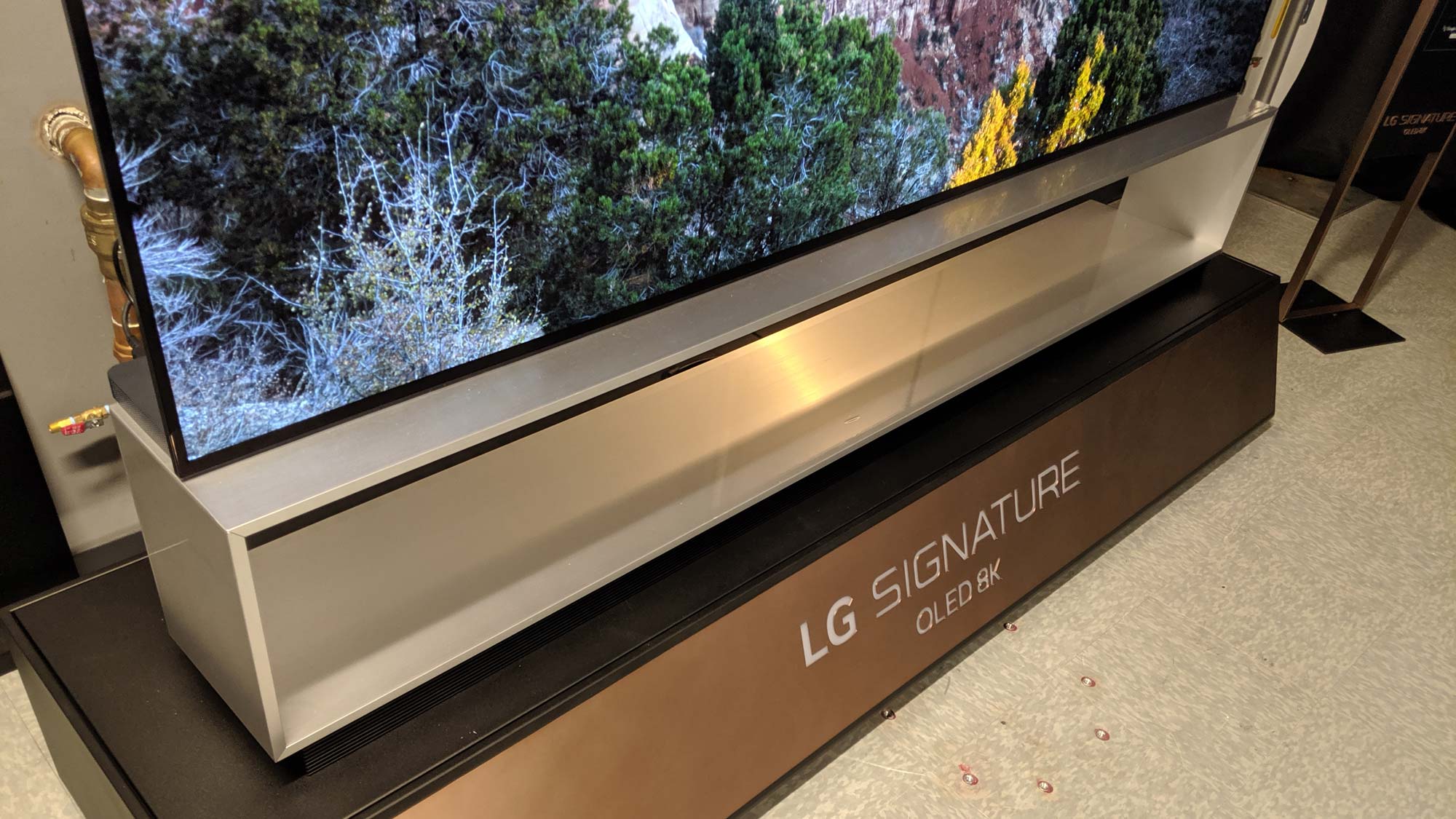
Speaking of installation, the Z9 is one of the few TVs we've seen that is specifically designed without a wall-mount configuration. The TV is floor-mounted, coming with its own stylish stand. While LG tells us it's technically possible to get this set on a wall, the process involves custom wall brackets and disassembly of the unit so that both the screen and the stand can be hung on the wall.
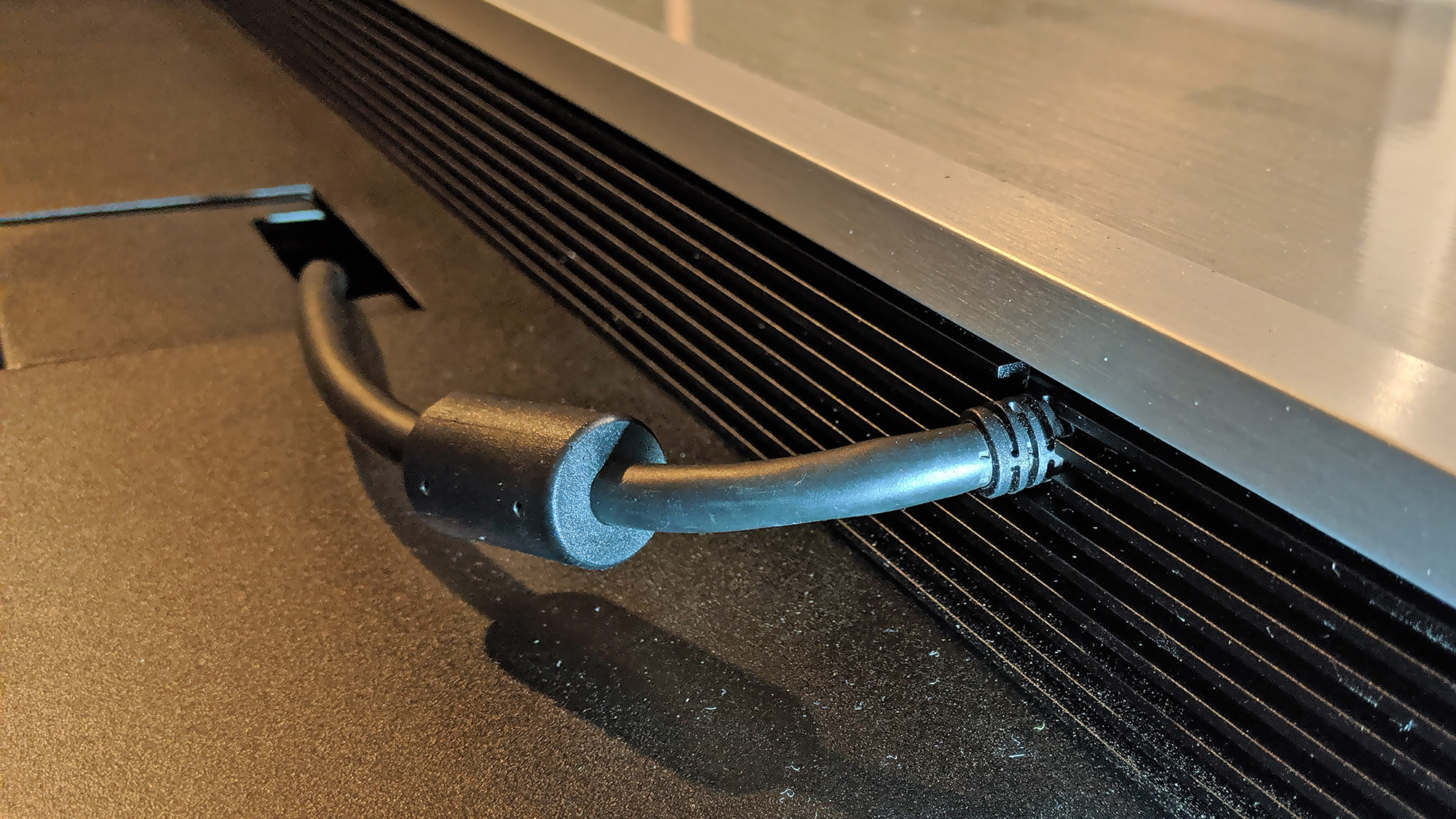
The brushed-metal stand isn't merely a stylish accessory; it also houses some of the Z9's electronic components, and assembly includes connecting the base and display with a single-cable connection. The TV's power cord also runs through the base of the stand.
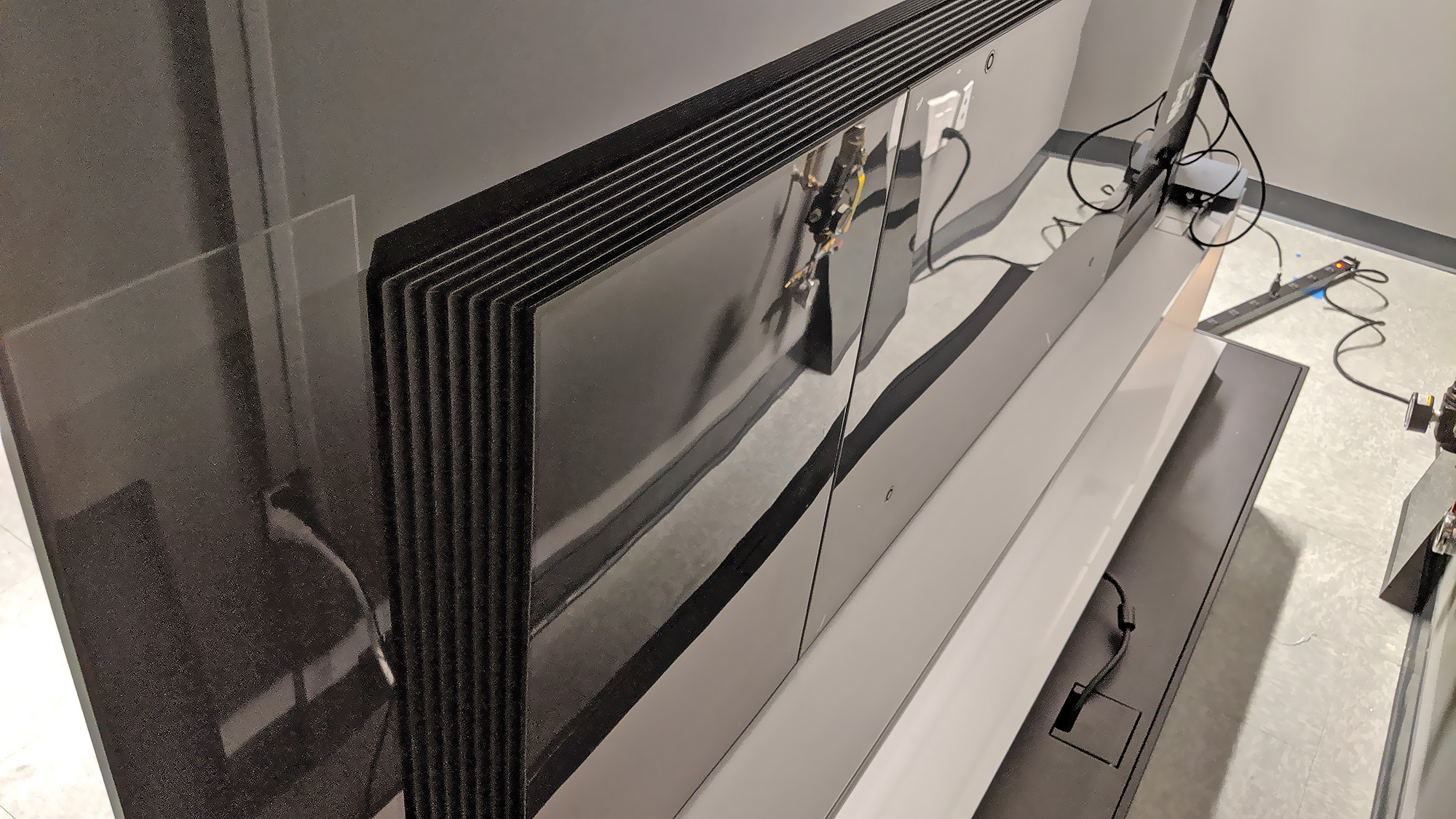
Additionally, the base is designed as part of the sound system, with an opening that runs the length of the TV so that the Z9's downward-firing speakers can pass sound through the stand. On the underside of the stand is a sound reflector that then directs the sound forward, toward the viewer.
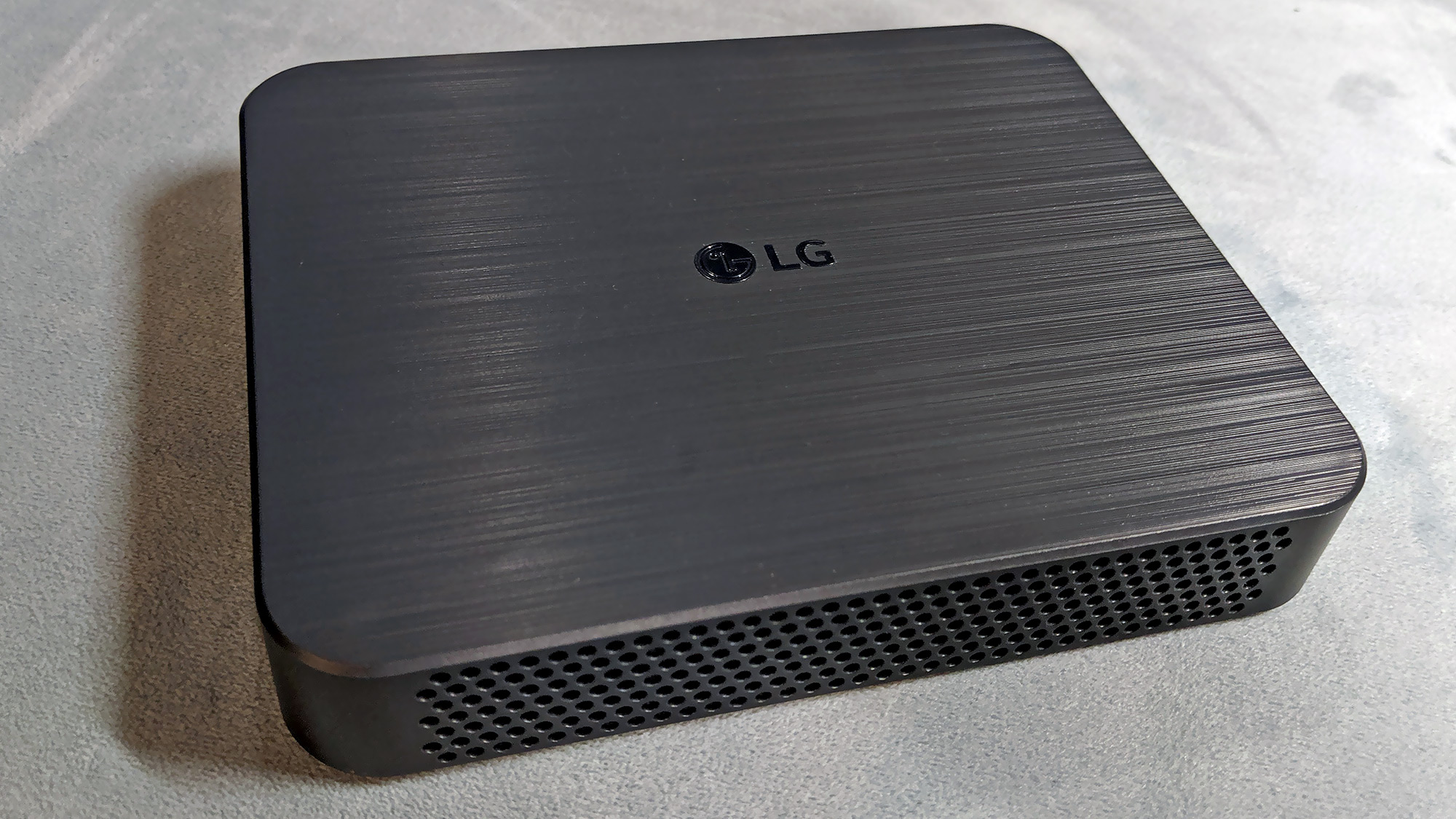
Finally, there is a third component for the TV, a small upconverter box that attaches via USB and HDMI. This box allows the set to support some of the newest video formats for 8K video, with codecs for HEVC, AV1 and VP9. Without the box, these file formats won't play but will simply return an error message. As the 8K market matures and standards firm up, LG will issue firmware updates for the upgrade boxes to provide additional support.
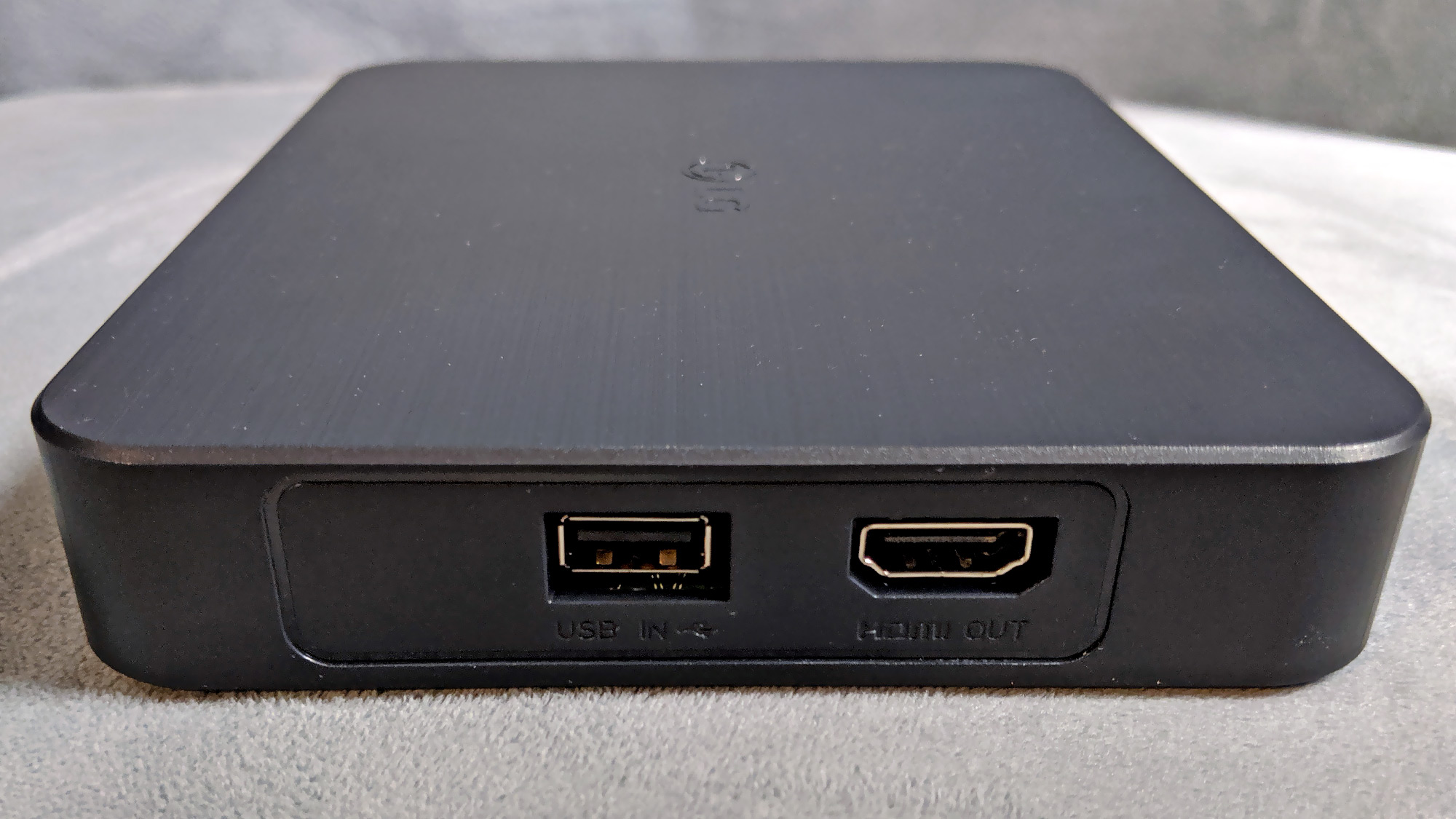
The Z9 OLED benefits from all of LG's best design tricks. The same display-on-glass technology used on LG's Wallpaper OLED TV means that the majority of this 88-inch display is superthin, a mere fraction of an inch thick across much of the display. Toward the bottom of the chassis is a thicker portion, measuring only 2 or 3 inches thick, which houses the internal components and the speakers for a 4.2-channel sound system.
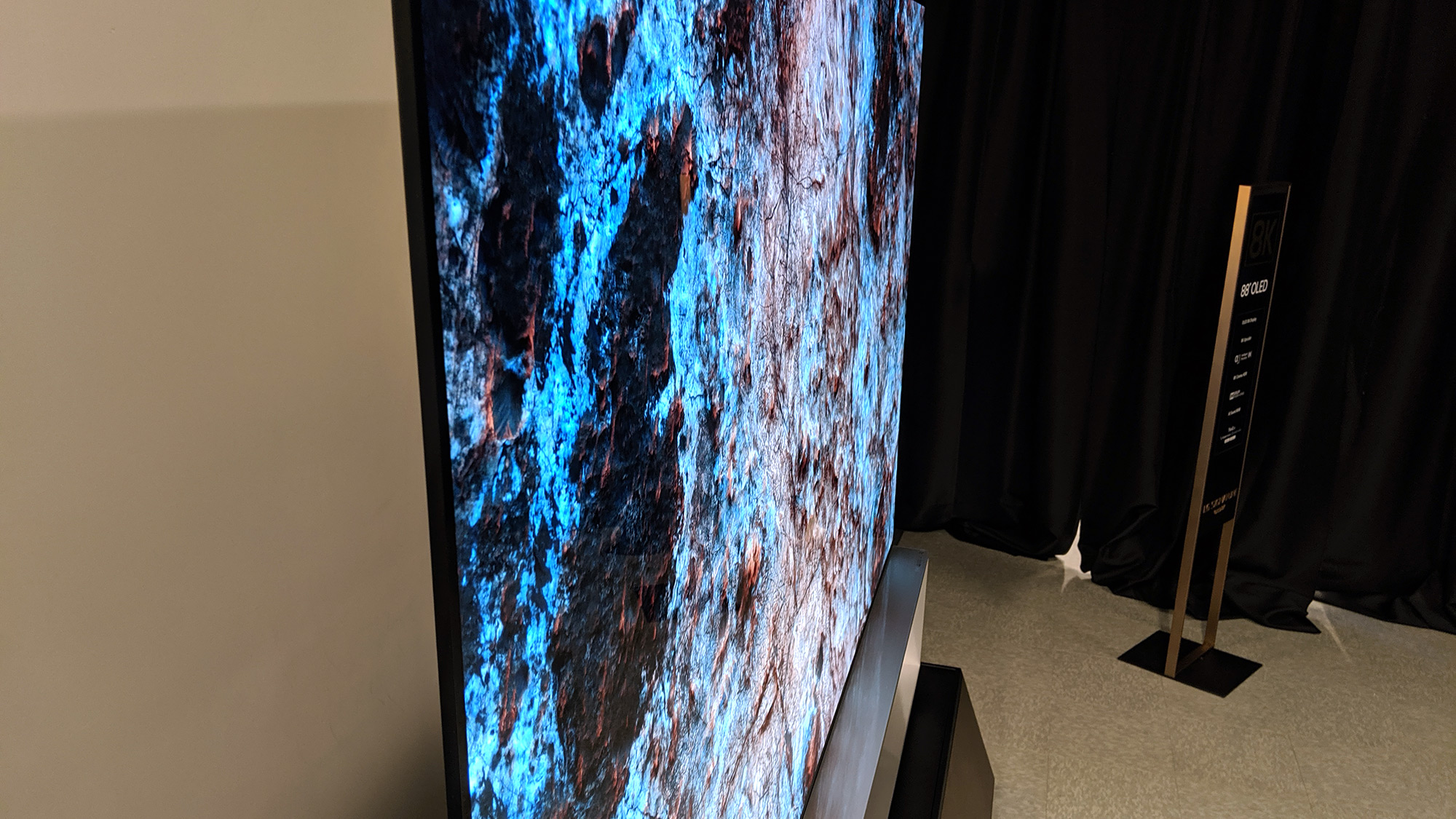
The included stand looks sharp, with brushed-metal surfaces, a stark rectangular silhouette and fine touches like a small spring-loaded hatch for running HDMI cables through. The bottom base of the stand has an additional black, plastic housing, which holds the Z9's other components. This bottom portion of the stand sits deeper from the rest, extending 11 inches deep. That all makes for a pretty sizable footprint, with the TV taking up nearly 6 square feet of floor space.
The size of the screen will also dictate the minimum size of the room that can accommodate the set. The old joke among TV enthusiasts is "What size house do I need for this TV?" But in the case of the Z9's 88-inch display, this is less of a joke.
If the set used lower-resolution display technology, the recommended viewing distance would by roughly 7 feet away for a 4K display to as much as 14 feet back for full HD. While the sheer size of this screen still necessitates sitting a few feet back in order to see everything on the screen, the higher resolution means that you can (in theory) sit much closer to the set without picture detail being lost to abstraction in a visible pixel structure.
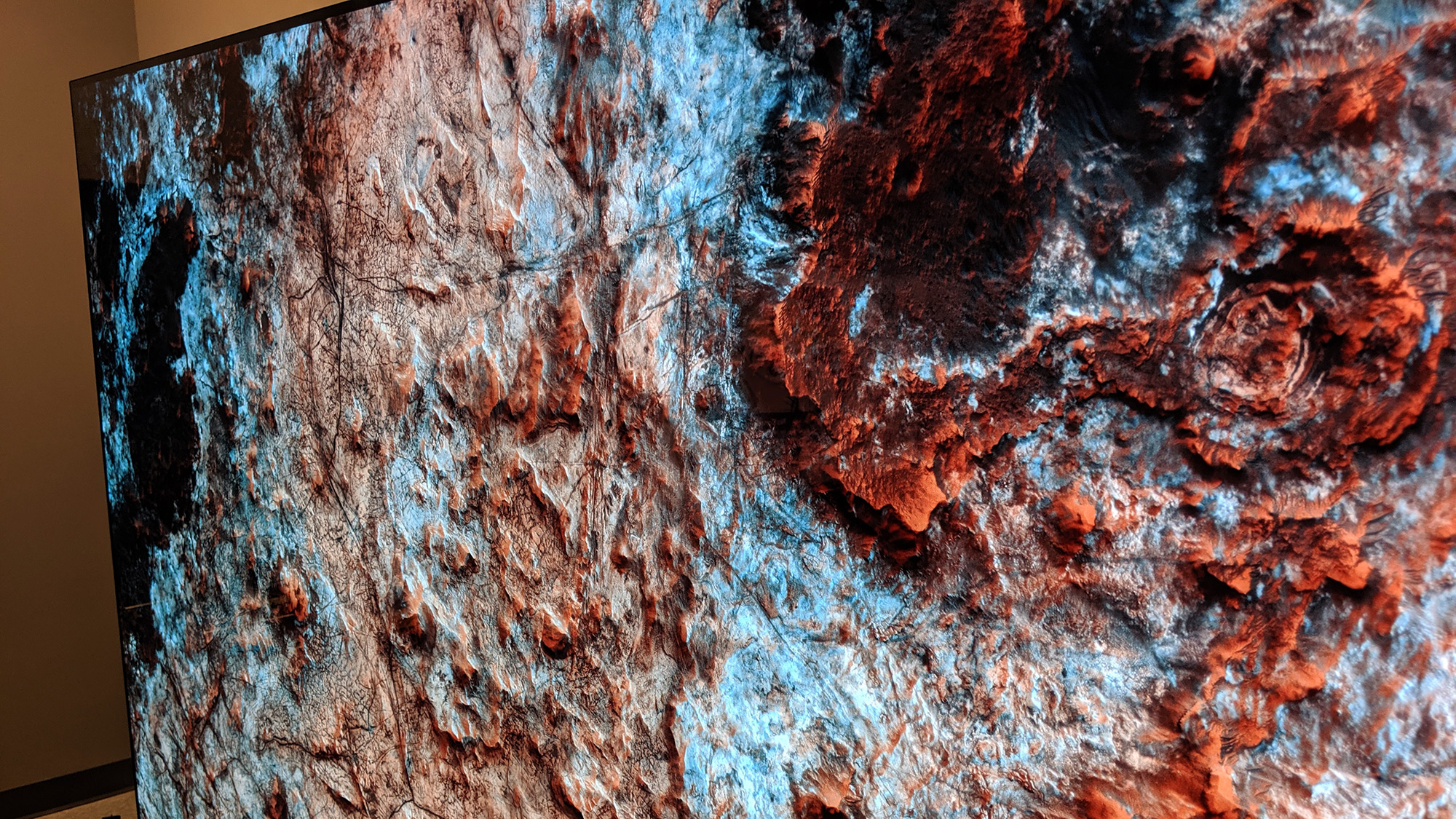
While you still won't want to sit 2 feet from the screen, the higher resolution does mean that if you do, you'll still get a clear picture. In fact, I had to get within inches of the display surface to make out the individual pixels. I'd still recommend placing seats about 5 feet away from the screen, but you can definitely sit closer to 8K.
LG Z9 8K OLED TV ports
Connecting an 8K display has not always been a straightforward proposition, as the standards for 8K picture hadn't been set and cable bandwidth limitations prevented any single-cable solution. Sets as recent as last year's Samsung Q900 models required a special quartet of concurrent HDMI connections to tile four 4K images into a single 8K picture. It meant that there were a lot of hoops to jump through to actually enjoy anything in 8K.
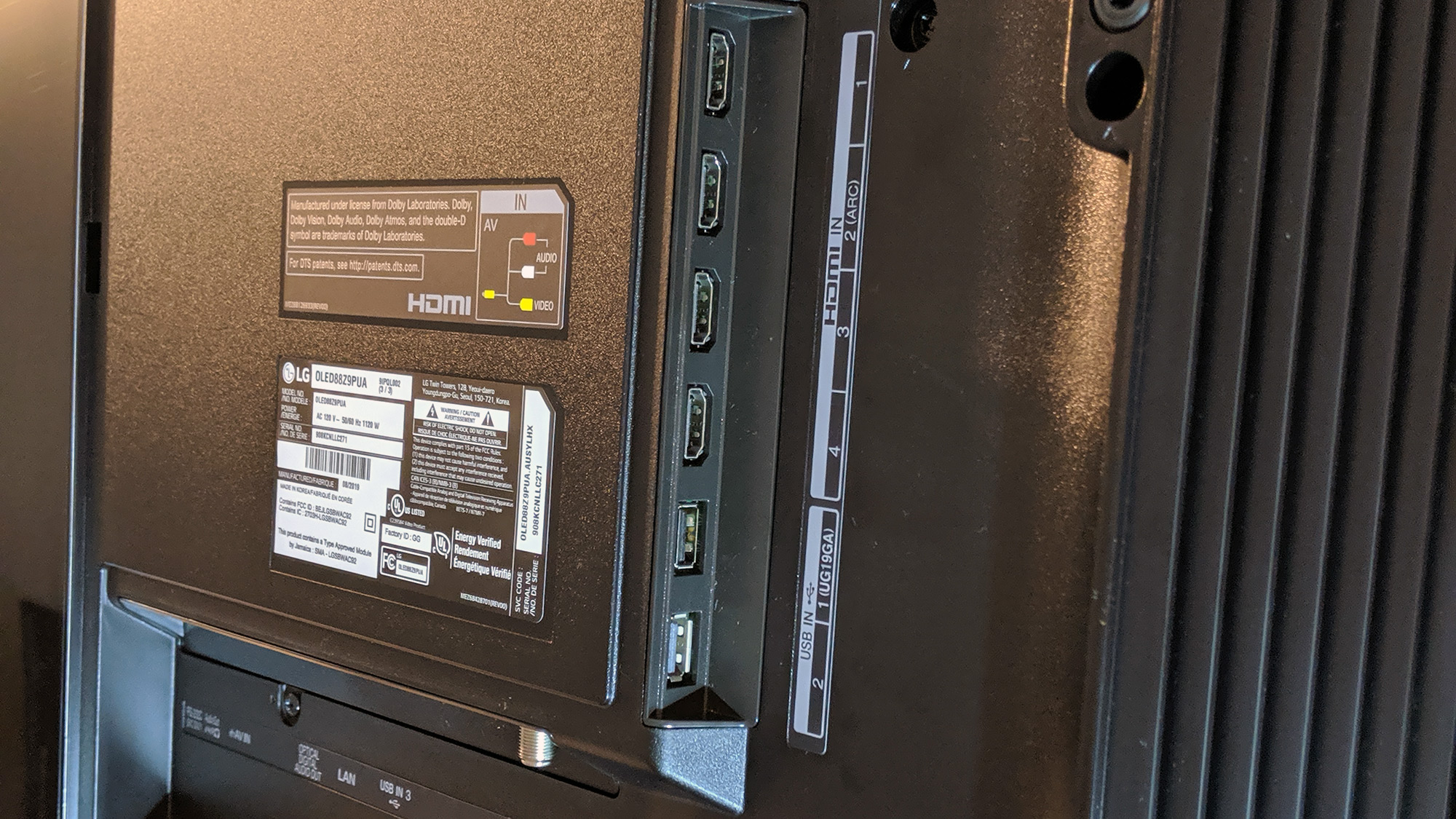
The LG Z9 8K OLED benefits from being one of the first sets with the HDMI 2.1 standard built in. This means that any one of the Z9's four HDMI ports can carry up to 48 Gbps, with the capability of handling 8K resolution at 120 Hz. It also means that one of the HDMI ports supports Enhanced Audio Return Channel (eARC) for sound systems and offers higher bit rates than the older ARC standard, so you can use the eARC connection for Dolby Atmos and other rich sound formats.
And because the standard is backward-compatible with the older HDMI 2.0 spec, you can still use all of your existing home-theater gear with the same HDMI cables you already own — with the limitation that those cables can only handle signals for 1080p and 4K content.
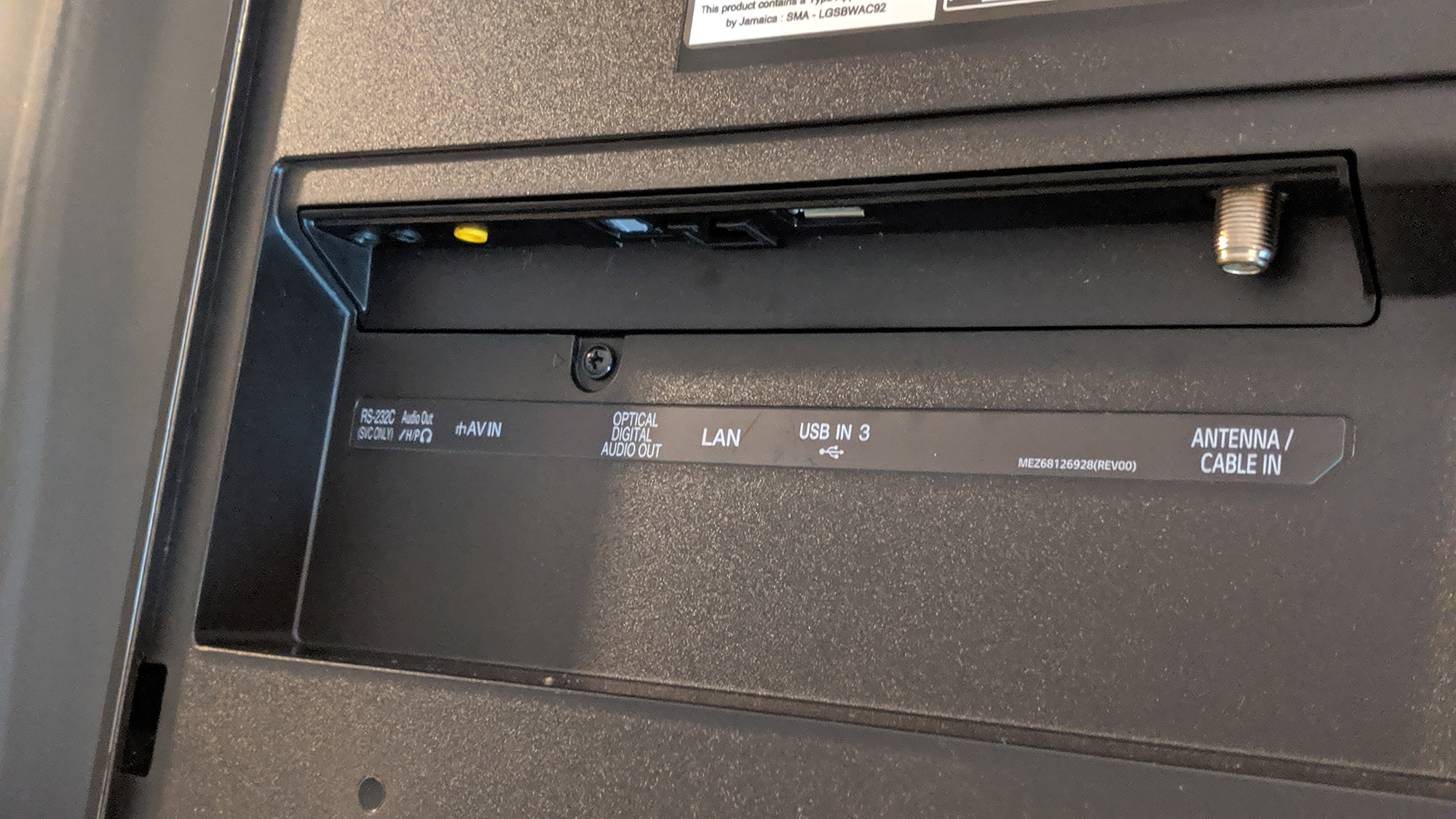
The set also boasts three USB ports, a LAN port for wired Ethernet and a coaxial connector for antennas. Optical digital output and an RS-232C port are also available.
LG Z9 8K OLED TV performance
The LG Z9 8K OLED display sounds like the holy grail of TVs, offering incredible resolution paired with the top display technology and latest connectivity options. And if you thought that, you'd be right. The Z9 is astonishingly good-looking, and everything that makes an OLED display so impressive is bigger and better on the 88-inch screen.
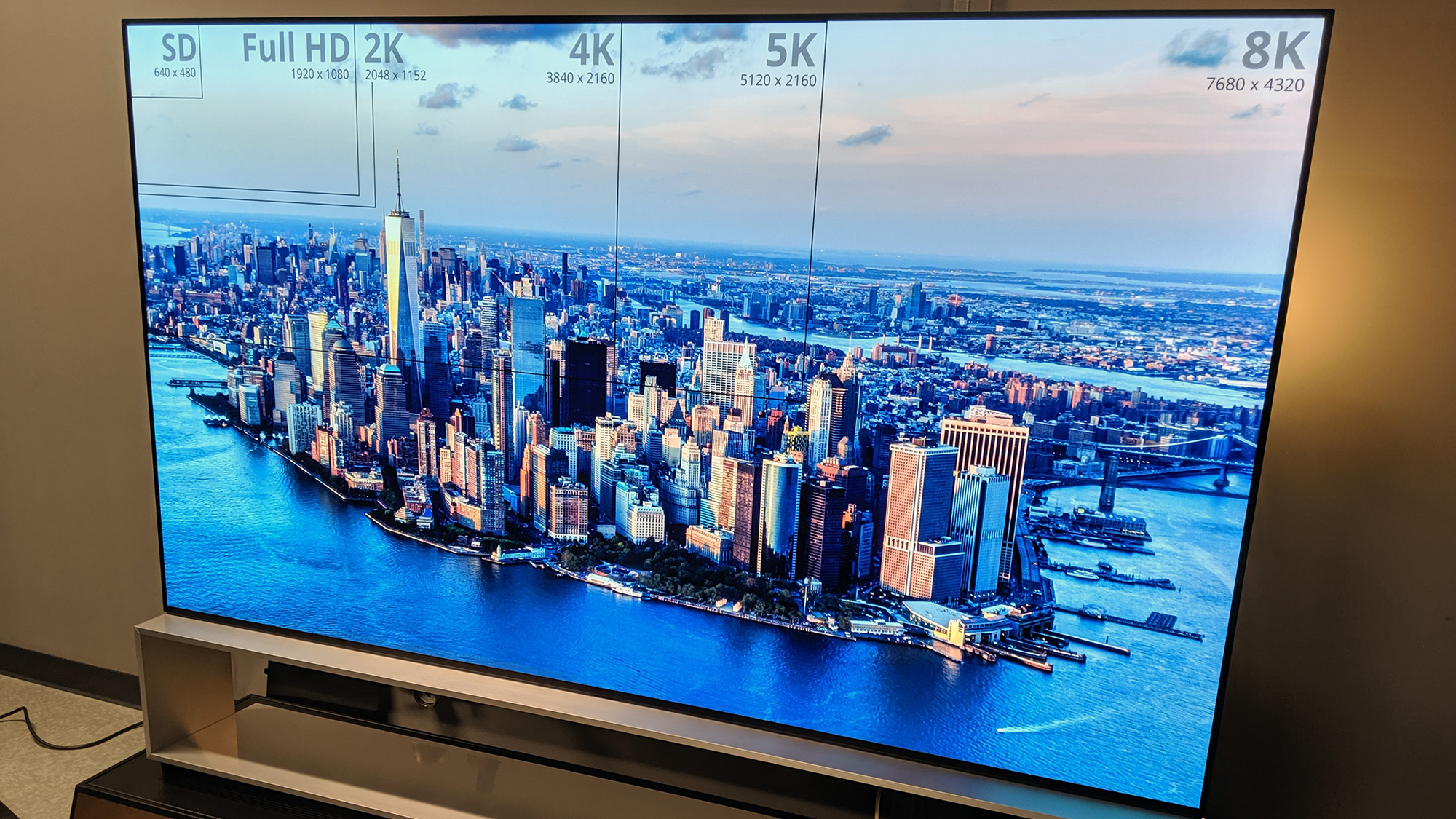
But gauging the actual performance of the Z9's 8K OLED display presented us with a few problems. Namely, our testing equipment isn't well-suited to the higher-resolution format, and the vast majority of test content out there is for lower-resolution displays.
While LG did provide some 8K videos samples, those have actually become very familiar to any reviewer at this point. They're the same handful of clips used by manufacturers for 8K demos since last year. And while there are 8K-ready pattern generators and lab instruments for testing, which LG also made available to me, they are sufficiently different from our standard test gear that results wouldn't be directly comparable.
Long story short, while we were able to run our full battery of TV tests on the Z9, both the 8K ecosystem and our testing methodology need some time to mature. So when we discuss specific test results, take everything with a grain of salt, because we're applying older standards to newer technology and comparing the results across two very different generations of products.
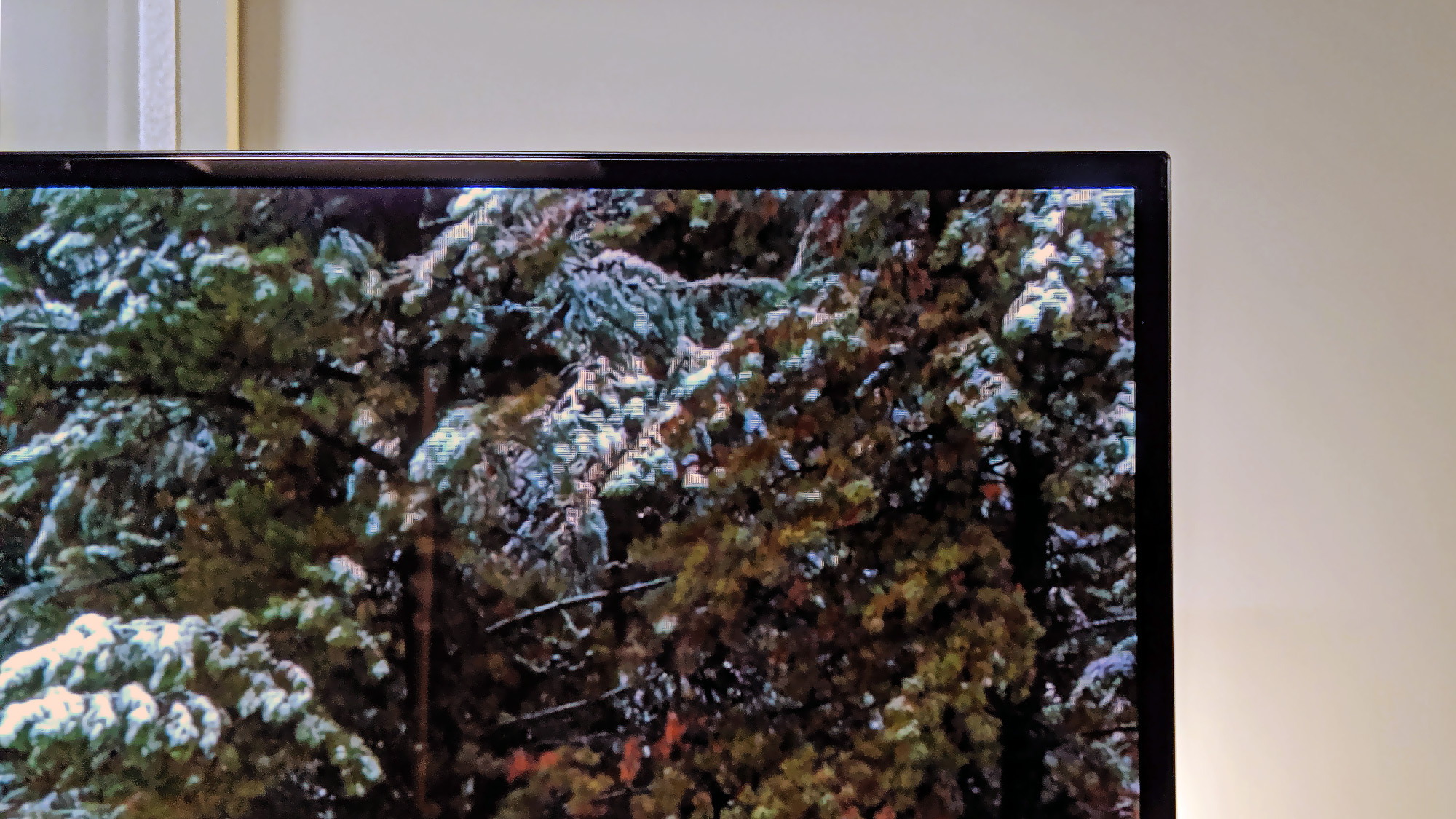
However, in looking at a handful of 8K clips on the Z9, I was blown away by how intensely detailed everything on an 8K screen can be. With 7,680 x 4,320 resolution, the 88-inch display has more than 33 million pixels. That allowed some amazing levels of minute detail. A clip of a bird looking at the camera was so sharp that I could see the individual strands that made up each feather.
Another image of a chameleon was so realistic that I found myself wanting to touch the beaded surface of the animal's skin to see what it felt like. And color was equally impressive, with bright hues and rich variations in tone. The green of the chameleon leapt off the screen, but other colors also popped, showing the lizard's complex coloring, which was really a pattern of greens, yellows and browns.
I also tested the sharpness and clarity of the display using 8K-resolution still images from NASA. One was a color image of a planet surface that was rich with different hues and etched with geographic features. The level of detail was such that you could zero in on pretty much any patch of screen and see fine details. The Z9 looked super, whether I viewed the image from 5 feet or 5 inches.
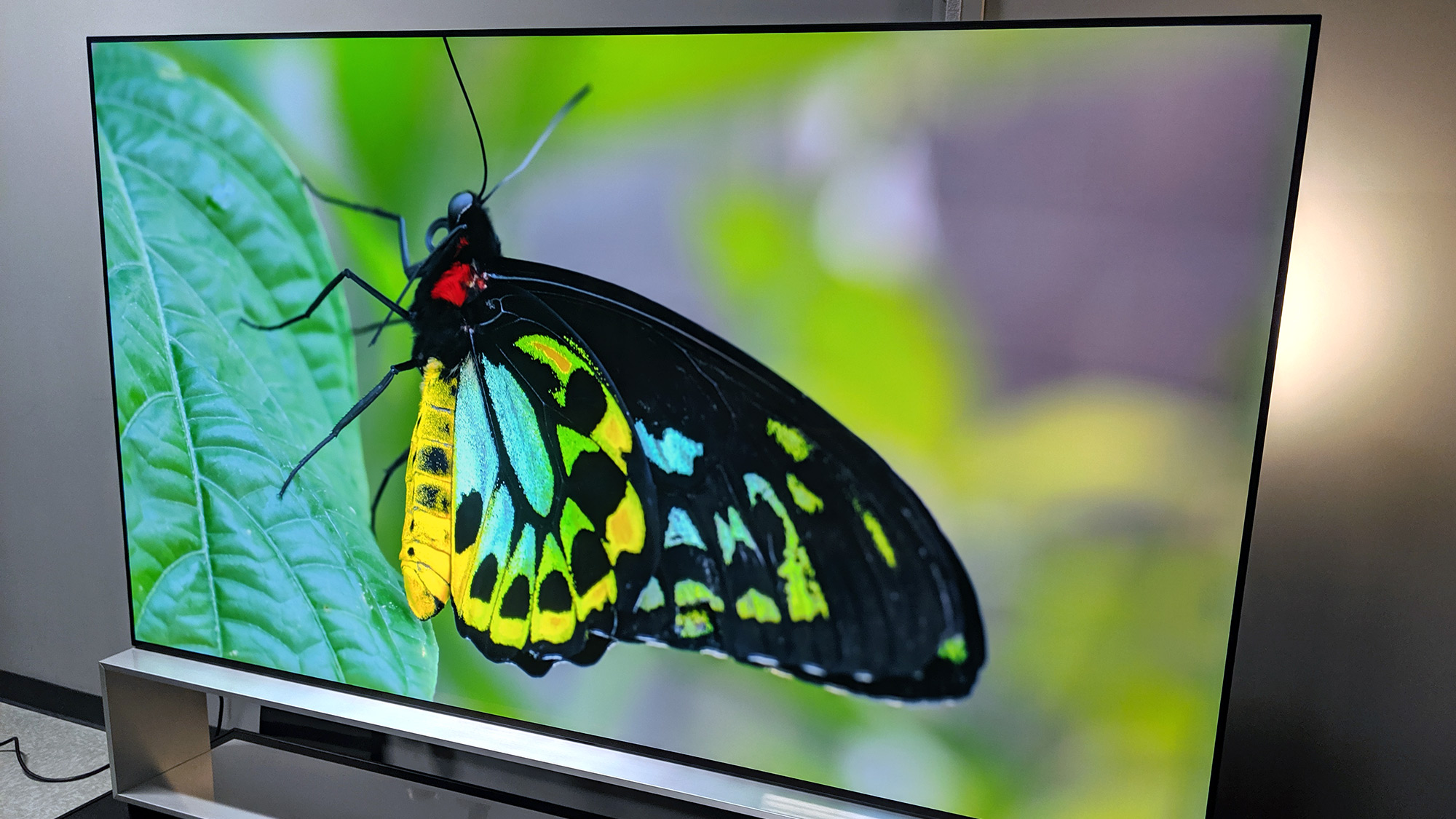
The same was true of an ultrasharp black-and-white photo of the moon's cratered surface. Individual microcraters could be easily distinguished, and the 8K display managed to bring out a level of detail unlike anything I've ever seen.
When we tested the display with our X-Rite i1 Pro spectrophotometer, we were able to measure the color reproduction at 129.6% of the Rec. 709 color space, meaning that it exceeded the standard in color volume. We've seen this before, on sets like the Sony Master Series A9F OLED, which measured at 130.8%, and the LG C9 OLED, at 132.1%. But compared to standard LCD sets, it's a nice step up. Even the best LCD panels, like the Samsung Q90 QLED (99.8%) hover at right around the 100% mark.
Color accuracy is also very, very good, with a Delta-E rating of 2.7 in Cinema Mode, but it's worth noting that this was on an uncalibrated display. While we generally stick to out-of-the-box settings for our measurements, to match what the average user will experience, the Z9's $30,000 price nearly guarantees that it will be also be calibrated during installation, with corrections made for some of the minor inaccuracies of the factory settings.
We have seen better out-of-the-box accuracy from other premium 4K sets, such as the Samsung Q90 QLED (1.5) and the similarly large-screened Sony X9050G 75-inch Android TV (2.56), but these differences are hard to spot. While scores closer to zero are better, image experts say that any showing lower than a 3.0 is good enough that it will be hard for the unaided human eye to notice any issues.
LG Z9 8K OLED TV upscaling
But the real performance issue for 8K TVs is one we scarcely touch on in our 4K TV reviews: upscaling. Given the absence of any 8K content on the market, it's difficult enough to test 8K TVs at full resolution, and you're not going to be buying 8K Blu-ray discs anytime soon. This means that anyone buying an 8K set now will almost exclusively be viewing older content, from lower-resolution sources. As such, the ability to make 4K and 1080p content look good on a giant 8K display is paramount.
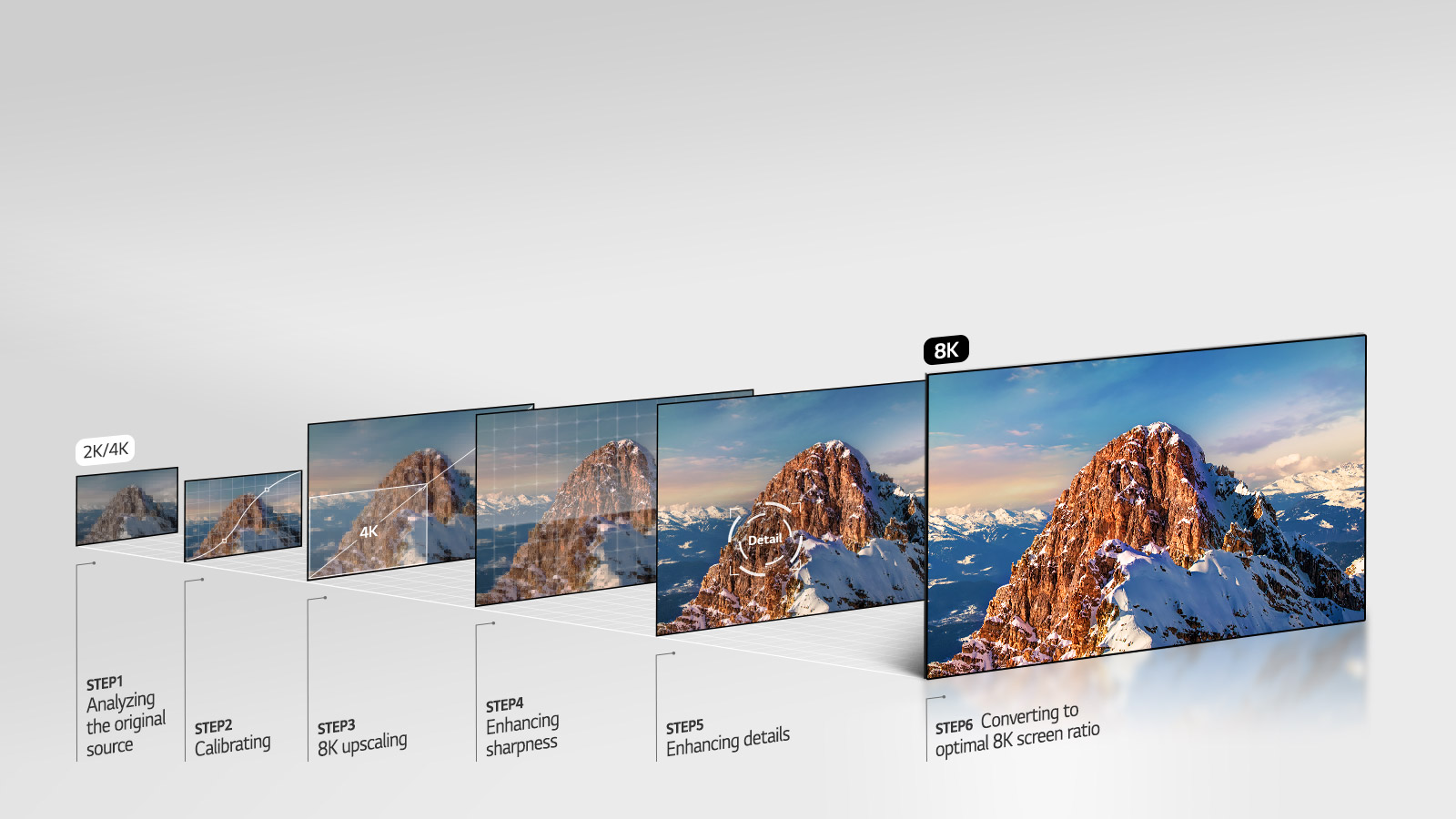
The most basic form of upscaling uses a technique called pixel doubling. Essentially, to make a lower-resolution image display properly on a higher-resolution screen, the TV will take the pixels from the source content and duplicate them to make a larger representative "pixel" consisting of multiple smaller pixels. If a single pixel is a tiny square of color on the screen, the doubling simply makes that square larger.
This approach has problems, largely because larger pixel blocks make nonlinear content, such as the curves that make up most people and objects, look jagged and blocky. The approach exaggerates pixelation and can leave upscaled content looking much worse than the lower-resolution source material. To solve these issues, sets use techniques like anti-aliasing and vector smoothing. Under ideal circumstances, you shouldn't even notice upscaling when it's in use, let alone upscaling errors.
LG relies on a combination of brawn and brains with processing power and AI smarts. The Z9 OLED is outfitted with the α9 Gen 2 Intelligent Processor 8K, the 8K variant of the company's best video-processing chip. LG's set pairs this local processing power with sophisticated upscaling algorithms and AI-enabled fine-tuning. But regardless of the technology used, judging upscaling performance still comes down to how good the content looks when you watch it.
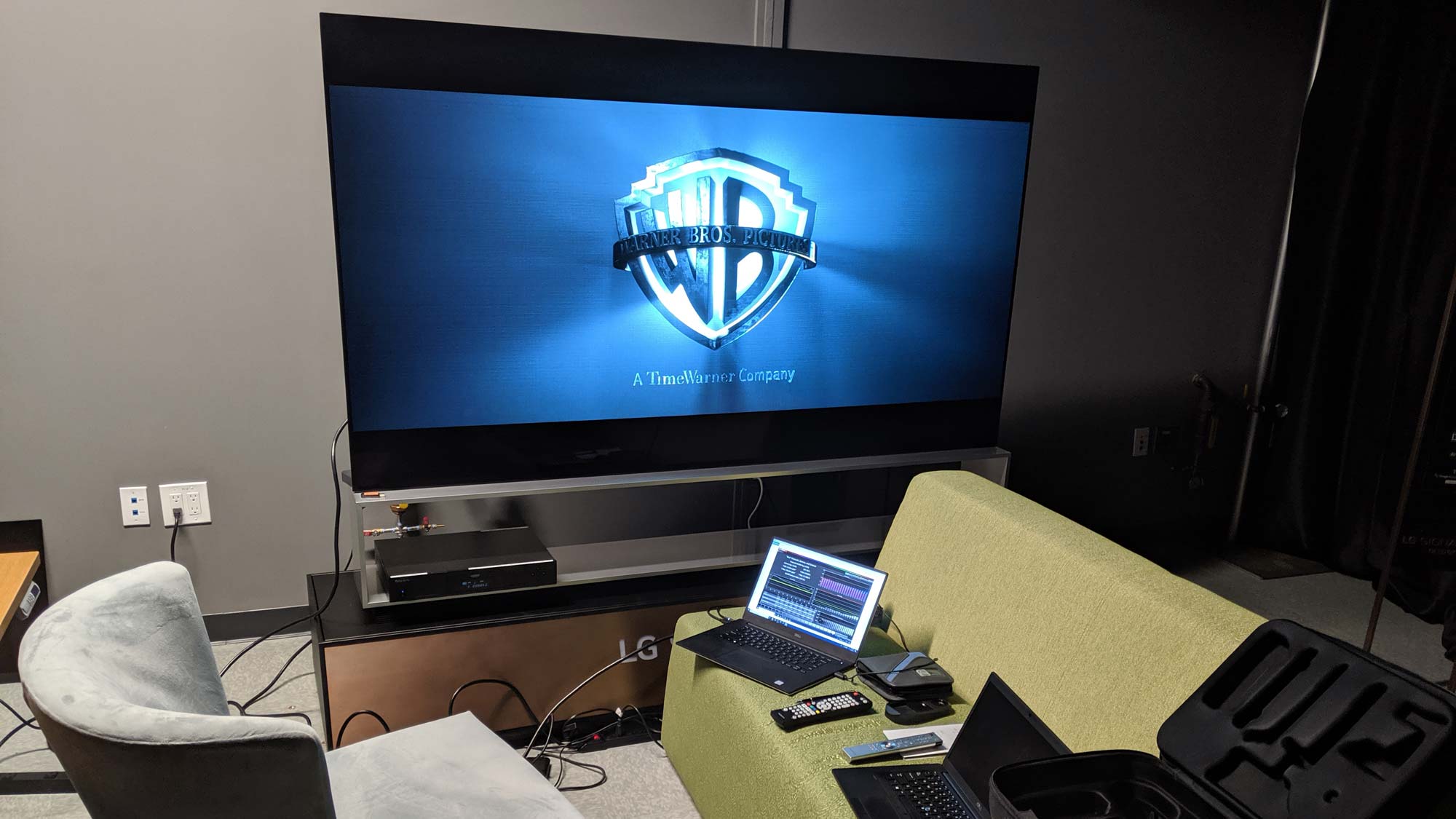
We started with 4K content, since it's the closest to 8K quality currently available to consumers.
With Blade Runner 2049, even when upscaled from 4K, the image was immaculate. This is as beautiful a version of the film as you'll get outside of an actual theater, and it may actually look a little better than that. Colors were spot-on, and details were incredible. The HDR performance is superb; blacks were deep and inky, brights were powerful, and the midranges were rich and varied.
Our favorite test for local dimming, the campfire scene from Blade Runner 2049, offered up glowing orange sparks that were perfectly contrasted against the jet-black sky. A subsequent scene set in a shadowy aqueduct was filled with rich black shadows, but those shadows never overwhelmed the details in dimly lit faces.
Most impressively for an OLED display, there were no crushed blacks here. The display rendered the scene's gray concrete walls and dark clothing with excellent details, despite the dark colors and low lighting that I'd expect to challenge any OLED display.
Spider-Man: Homecoming looked just as good on the Z9. A nighttime shot of Avengers Tower looked excellent, with the stylized A of the Avengers logo glowing brightly among the lights of New York City.
Another nighttime scene, this one of Happy Hogan in a darkened office, again demonstrated the excellent low-light performance of the Z9. Hogan's black suit still boasted sharp detail as he walked through deep shadows. And in more-colorful, daylight scenes, the bright colors of Spider-Man's suit and surroundings looked spectacular.
That same vibrance appeared in scenes from Creed II. Brightly lit desert-training scenes looked excellent, with clear blue skies highlighting the superb color and consistent brightness afforded by OLED technology.
MORE: QLED vs. OLED TVs: Who Wins?
Colors were especially vivid. The blood-red fabric and gold-embroidered lettering of Viktor Drago's robe looked fantastic. As he stalked through a dark hallway, the passing overhead lights dramatically showed how effectively the Dolby Vision HDR format handles specular highlights and low-light shadows.
In the final Creed/Drago boxing match, the skin tones of both actors were lifelike and natural, with the upscaled 4K image showing every pore and freckle in crisp clarity. And as the fight bell rang, the fast action was exceptionally smooth and lifelike.
To further test the Z9's upscaling capability, I tried some full-HD content, which requires much more upscaling. If an 8K display can be compared to four tiled 4K displays, those 4K displays themselves consist of four tiled 1080p displays, meaning that a full-HD image has to be enlarged to 16 times its original size for an 8K display.
When we tested the full-HD upscaling with a 1080p copy of Skyfall, 007 looked astonishingly good on the 88-inch screen. Scenes of James Bond driving at night, with the lights shifting around him, highlighted different sides of his face from different angles, all looking surprisingly clean and sharp. The stubble on actor Daniel Craig's face looked quite good. While not as realistically detailed as it might be in native 4K (or 8K, though that's still hypothetical), the upscaler didn't muddle the fine details.
The Skyfall tests also demonstrated that standard-dynamic-range content still benefits from the higher dynamic range offered by the TV. The brightly lit skyscraper fight between Bond and a shadowy enemy still gets the LG's brightness enhancements, which delivered the high contrast of black silhouettes against the bright lights of an outdoor sign.
MORE: Best 4K Movies on Apple TV
When evaluating upscaling performance, however, you watch for different things than you might when, say, viewing 4K content on a 4K TV. Small details, like hairs on someone's head or the tight stitching on the seam of a shirt, are especially prone to looking less realistic when rendered through basic pixel-doubling techniques. And smooth curves, such as text on the spine of a book, may look jagged instead of smooth, with any pixelation enhanced or exaggerated by less-sophisticated upscaling techniques.
However, whether it was the on-screen lettering of a newscast or the stenciled "Police line — Do not cross" message on police barricades, the fine details not only looked sharp on the 8K display; they also looked right. Whatever upscaling techniques the set used, the results were clean, crisp and realistic.
The display wasn't quite flawless, however. While impressive — and possibly the best display I've ever tested — there were a few minor issues that couldn't escape my notice.
Another sample we used to test the 8K Z9 was Planet Earth II. In watching this documentary, the remarkable thing about the upscaler was how well it maintained and even enhanced fine detail on everything from a galloping giraffe to a lounging sloth. Fine hairs looked lifelike, natural environments practically popped off the screen as an explosion of color and detail, and shots of ocean and jungle alike were so bright and colorful that it nearly made my eyes hurt.
Scenes from a tropical island were intensely detailed, as sweeping shots took in everything from ocean waves to the leafy jungle. However, when the documentary panned across an overhead view of a tropical island, I was unable to ignore a slight judder. It didn't show up in every scene, or even most scenes, but anytime tight detail passed quickly across the screen, the image would flicker. It was especially noticeable in shots of giant lizards, with their beaded skin, or in an overhead shot of a forest filled with bare tree branches. These small details would judder and jump along instead of flowing smoothly as the camera panned.
Viewing angles weren't as wide as I would have expected on an OLED display. While OLED has the benefit of wider viewing angles than LCD sets, I still noticed some distinct color shifting when viewing full-color test screens. While this is unlikely to be noticeable when you're sharing a couch in front of the TV at a distance of 5 feet, it becomes very noticeable when you get closer to the screen.
At 88 inches from corner to corner, the Z9 is large enough that you'll see any limitations on viewing angles even from a front-and-center viewing position if you're close enough to the screen. It's simply a matter of geometry; your point of view may be directly in front of the center of the screen, but the outside edges and corners are at a slight angle to your point of view, and that angle gets steeper the closer you get to the screen.
In these instances, you will definitely be able to pick out some color issues at the outside edges. In our testing with single-color screens, pink shifted toward purple, red shifted toward orange and blue shifted ever so slightly to green. The shifts are subtle enough that they will be harder to spot when viewing normal content, like a movie or a football game. But some picky home theater enthusiasts will definitely be a little disappointed that the viewing angles aren't a full 180 degrees.
LG Z9 8K OLED TV gaming performance
Once you've watched a few movies on the Z9, the next thing you'll want to try is probably gaming. The good news is that the Z9 seems to be a pretty decent gaming TV. When we connected our Xbox One X to the 88-inch OLED, the Z9 supported everything the console had to offer. Gaming in 4K at 60 Hz? Check. Streaming content in a variety of frame rates, with 10-bit color and HDR support? Check, check and check. The set supports full 4K gaming and streaming, complete with Dolby Vision support.
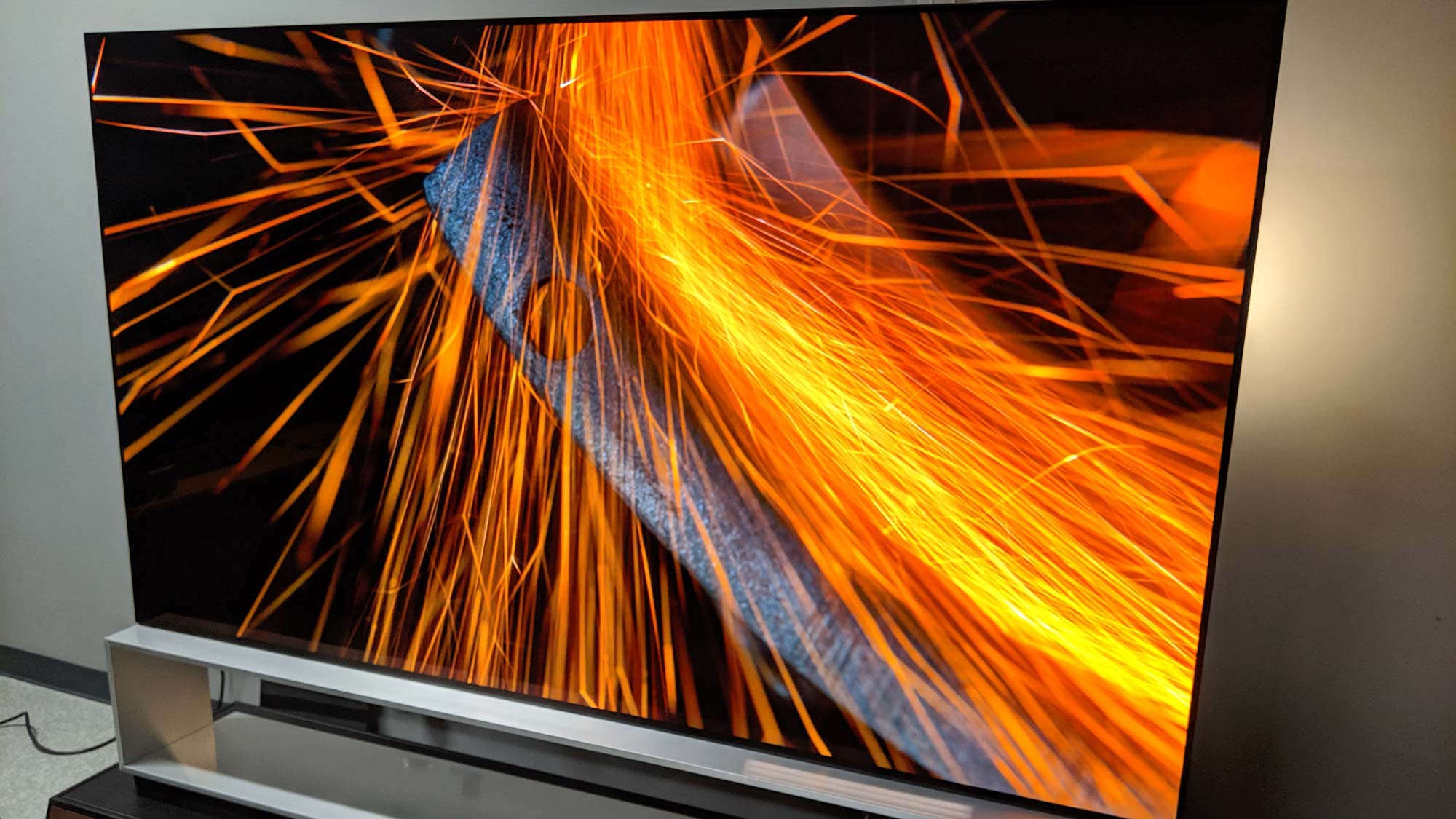
And games looked incredible. Even upscaled from 4K, a game like Forza Horizon 3 looked amazing. Cars appeared incredibly realistic at this scale, from the HDR sunlight glinting off windshields to the vibrant colors of attention-grabbing paint jobs.
MORE: Best 4K gaming TVs
Actual gameplay was exactly what you'd get on a 4K TV, since all of the upscaling is done by the TV instead of the console, and the responsiveness is pretty quick. We measured the Z9's lag time at 17.7 milliseconds, which isn't bad for an ultrapremium OLED TV. The Z9 may be slightly less responsive than that in practice, because upscaling does necessitate some additional processing, but any such lag wasn't enough for me to notice.
LG Z9 8K OLED TV audio
A massive TV needs equally giant sound to accompany it, and the Z9 delivers, with a 4.2-channel, 80-watt system that includes a hefty 40-watt woofer. The audio produced is great, handling everything from whispered dialogue to booming explosions with crystal clear sound and powerful volume.
MORE: How to adjust the audio settings on your LG TV
Listening to the opening theme to Skyfall, I heard Adele's vocals clear as a bell, and the instrumentation came through perfectly, from the drums to the bass and horns. The same clarity of sound came through in the symphonic introduction music for Planet Earth II, which features delicate piano and full-bodied strings.
LG Z9 8K OLED TV smart features
As a smart TV, the Z9 OLED offers everything you'd get on any LG smart TV running the latest version of webOS. You can use the ThinQ AI voice assistant to find content and adjust settings with just a word or phrase, and the set features built-in Google Assistant and Amazon Alexa capability. And with the recent addition of Apple AirPlay2 and HomeKit compatibility, you can use Siri, too, through your iPhone, iPad or Apple smart speaker.
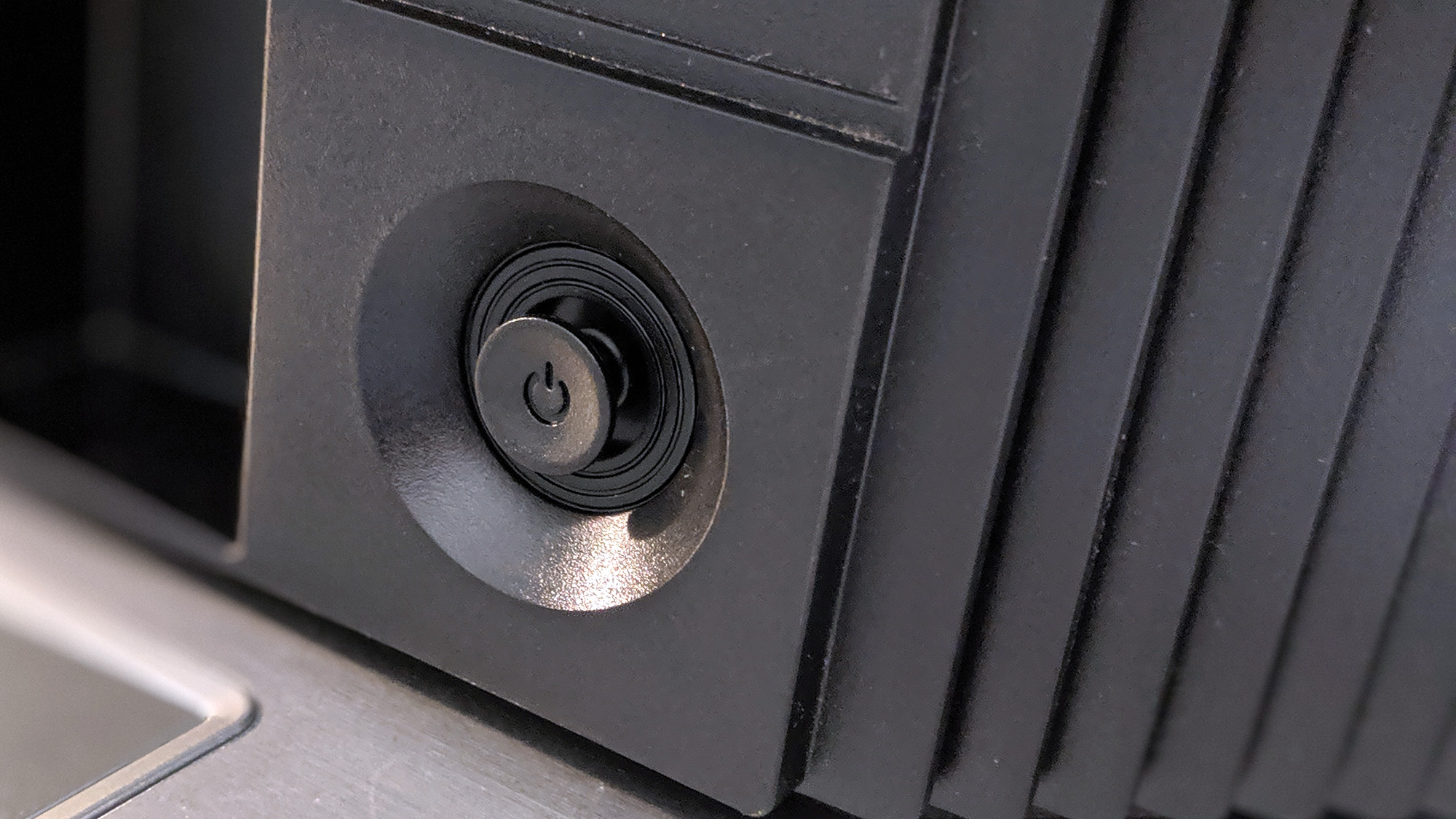
We didn't get to spend a lot of time digging into the smart functions of the TV, but from what I was able to see in my testing, it offers the full smart TV experience.
The one big question mark here is apps. While all apps in the LG store should display just fine on the larger, 8K display, I didn't have time to dig into whether any had noticeable scaling issues or compatibility problems with the larger display.
LG Z9 8K OLED TV remote
The Signature Z9 OLED comes with LG's Magic Remote, but it's the fanciest version of the motion-control remote I've ever seen. With a metal body and metal buttons, the remote has a stylish new look that feels great to hold and offers all of the functionality you'd expect.
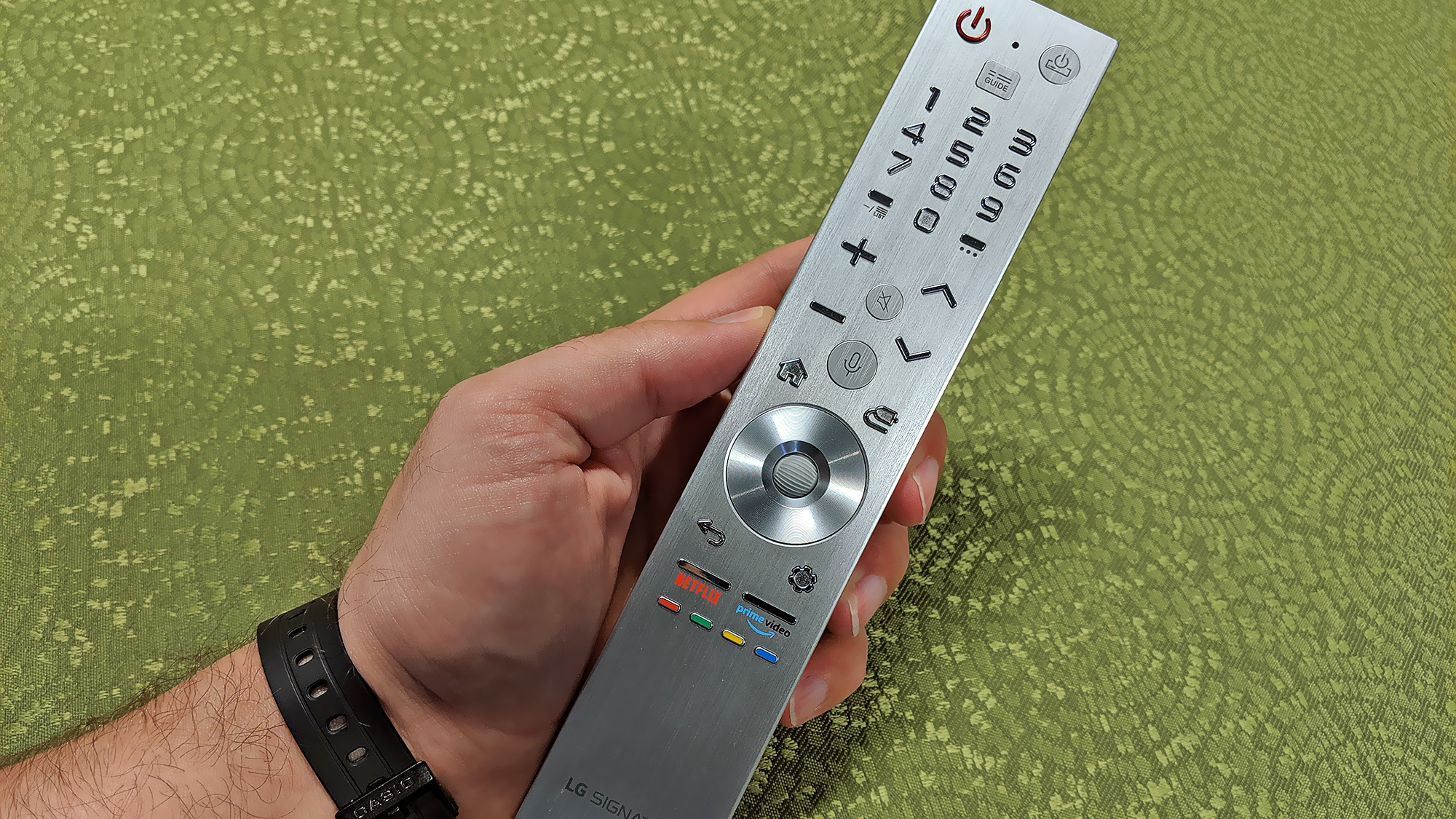
The Magic Remote features motion control, so you can point and wave the remote to control an on-screen cursor. The sheer size of the TV means that this is a handy feature. Unlike with smaller sets, where the cursor will hit the edge of the screen and get thrown off of alignment from the remote, there's so much screen space that it maintains the one-to-one relationship between where you point and where the cursor sits, doing it better than any other LG TV I've tested.
MORE: LG TV Settings Guide: What to Enable, Disable and Tweak
Voice control is as easy as pressing the microphone button, and the clickable scroll wheel gets an upgrade with a textured, spherical button.
Bottom line
From top to bottom, the LG Signature Z9 8K OLED is one of the best TVs that's ever hit the market, but it's not one I recommend to anyone. The TV itself is superb, showcasing every technology LG can bring to bear on the premium-TV experience, but 8K is still incredibly new as a consumer technology. Not only is there a lack of any real 8K content, but also, even the standards and formats that it will use are still up in the air.
If you're the sort to spend $30,000 on a TV simply to have the bragging rights of owning the latest TV technology, well, there's nothing I can say to dissuade you. And if you want to go that route, the LG Signature Z9 OLED ticks all the right boxes, as the largest OLED display LG has ever offered consumers, the first commercially available 8K TV from the company, and host to a dozen or more bleeding-edge technologies.
But in terms of value, you could buy our favorite 4K TV — LG's own C9 OLED — many times over. Heck, you could put a 4K OLED TV in every room in the house for the amount you might spend on just one 88-inch, 8K beast. And unlike the Z9, which promises support for content that has yet to arrive, the C9 OLED is good to go right now, with 4K content ready to stream or purchase in moments.
Brian Westover is currently Lead Analyst, PCs and Hardware at PCMag. Until recently, however, he was Senior Editor at Tom's Guide, where he led the site's TV coverage for several years, reviewing scores of sets and writing about everything from 8K to HDR to HDMI 2.1. He also put his computing knowledge to good use by reviewing many PCs and Mac devices, and also led our router and home networking coverage. Prior to joining Tom's Guide, he wrote for TopTenReviews and PCMag.
